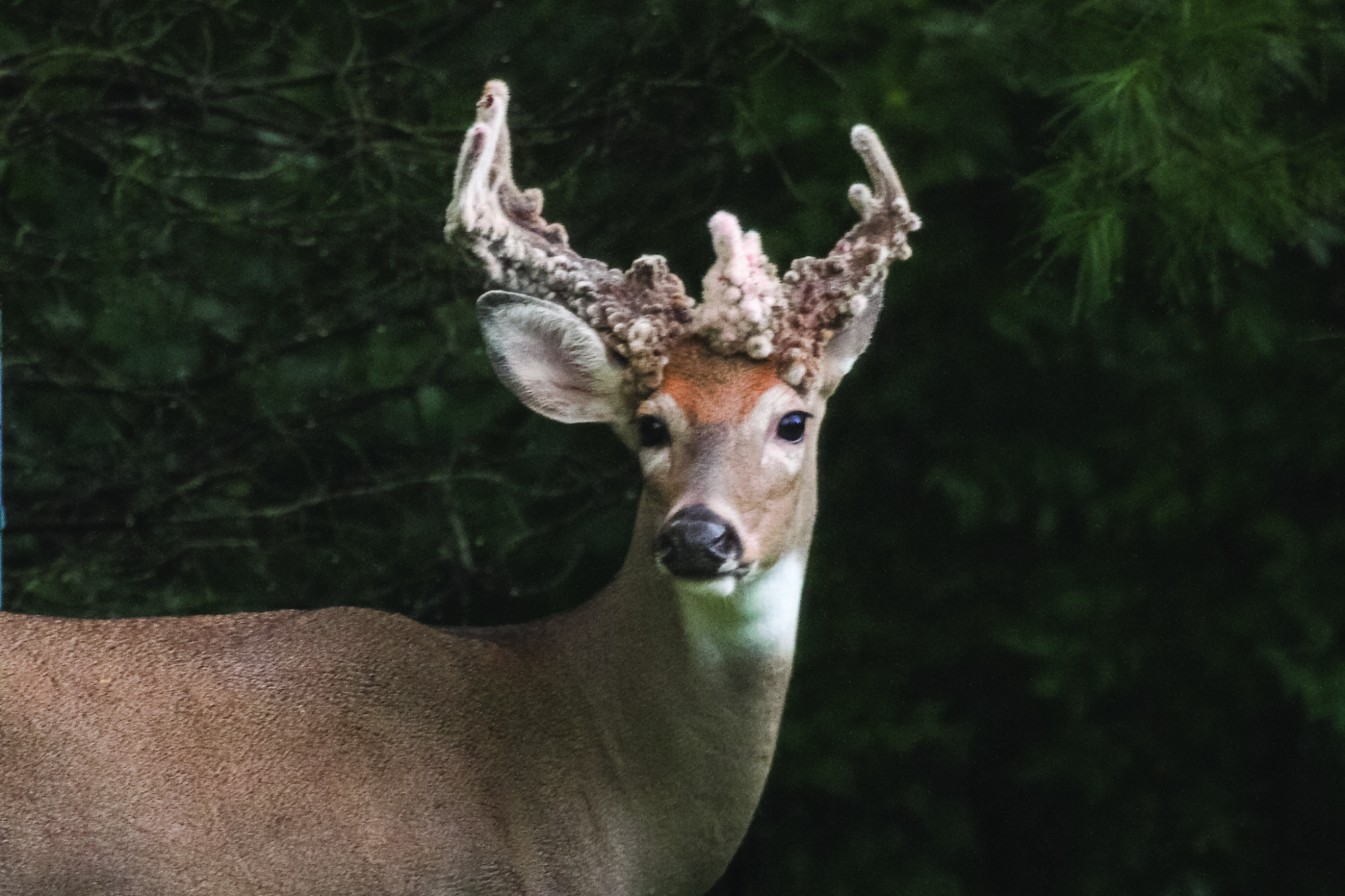Weird Deer

Biologists at the Kentucky Department of Fish and Wildlife Resources receive a dizzying variety of questions every year about weird deer.
Some white-tailed deer have patches of white scattered across their bodies. Others are completely white. Some have an extra antler while others look like they have a glob of velvet ice cream piled atop their heads.
Let’s start with the completely white, or albino, deer. This is a genetic condition in which deer do not produce melanin for pigmentation. Approximately one in 30,000 to 100,000 deer have this trait.
Deer that produce too much melanin have solid black coats.
White deer rarely grow too old because their lack of protective pigmentation causes medical problems from overexposure to the sun. They are also easier for predators to spot.
Animals with patches of white are known as piebalds. This is a genetic condition caused by a lack of pigmentation in an otherwise normal coat. Less than 1 percent of deer exhibit this trait. Hunters are allowed to take piebald deer as well as white deer.
Whitetails may also have some unusual antler growth. This is usually related to the amount of testosterone, or male hormone, that the deer produces.
Male deer start growing their antlers in late spring. Around September, testosterone production in bucks becomes turbocharged. Antlers stop growing and lose their velvety covering. Soon the antlers harden into bone. Around January, breeding season is over and testosterone levels plummet. This triggers enzymes, which attack the base of the antlers and cause them to fall off.
Weird antlers come about when something goes awry with the amount of hormone produced. Antlers may never harden or fall off. They keep growing like blobs of melted candles on a buck’s head.
What causes this? It could be a genetic defect or the result of an injury to a buck’s reproductive parts—anything that limits testosterone production.
Finally, biologists have encountered deer with three antler beams instead of two growing out of the deer’s head. Genetics can be one answer, or it could be the result of fighting with another buck.
Deer have a bony knob on each side of their head. Each knob anchors an antler beam to the skull. If a knob is injured due to fighting, two antlers instead of just one may grow out of a knob.
Keep a lookout this winter, and you just might spot one of these oddities yourself.
DAVE BAKER is editor of Kentucky Afield magazine, with the Kentucky Department of Fish and Wildlife Resources. Visit www.ky afield.com or call (800) 858- 1549 for more information.

